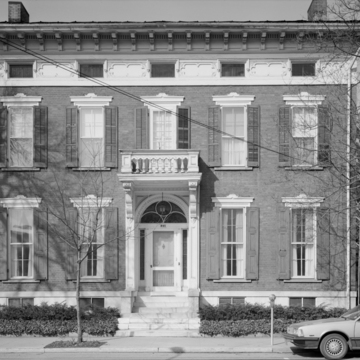Levi A. Mackey was a leading citizen in Lock Haven at the midpoint of the nineteenth century, involved in banking, politics, and schools. He and local builder-architect Henry Hipple (1808–1875) are credited with designing his house. Reportedly the first in Lock Haven to employ Samuel Sloan's version of Italianate, the house had a definite impact on the town and inspired a boom of buildings in a similar style. Of this group, Mackey's house is the best preserved. Similar houses are the BPOE 182 (former Simon Scott House) of 1854 at 210 E. Main Street, the James White House of 1854 designed by Cephas Batcheler at 46 W. Water Street, and the George Armstrong House (1867) at 51 N. Fairview Street, among others.
The Mackey house has paired round-arched windows in the gable ends, decorative window lintels, and perhaps the most common mark of the Italianate style, the bracketed wooden cornice. The attic-story windows are an unusual addition, but the effect became very popular in Lock Haven in the 1850s and is found on more than a dozen houses in the city.


